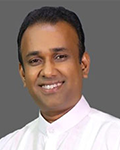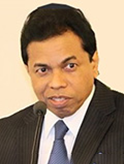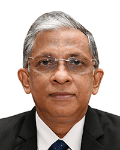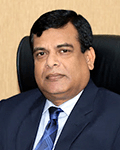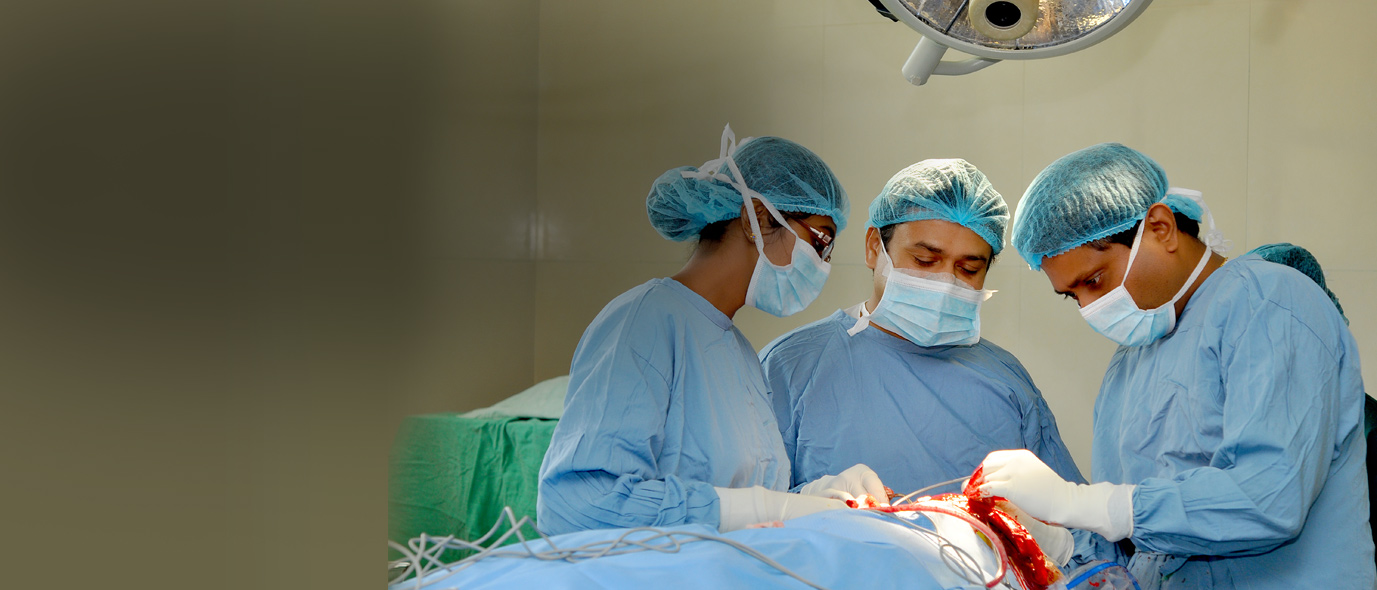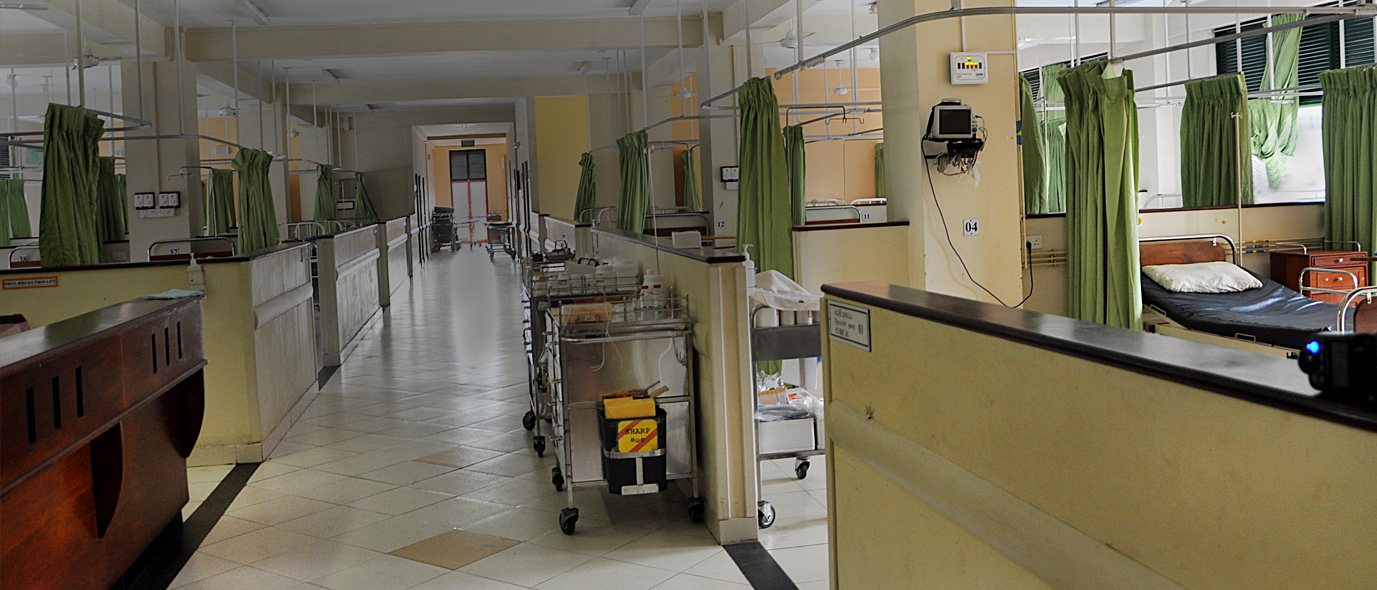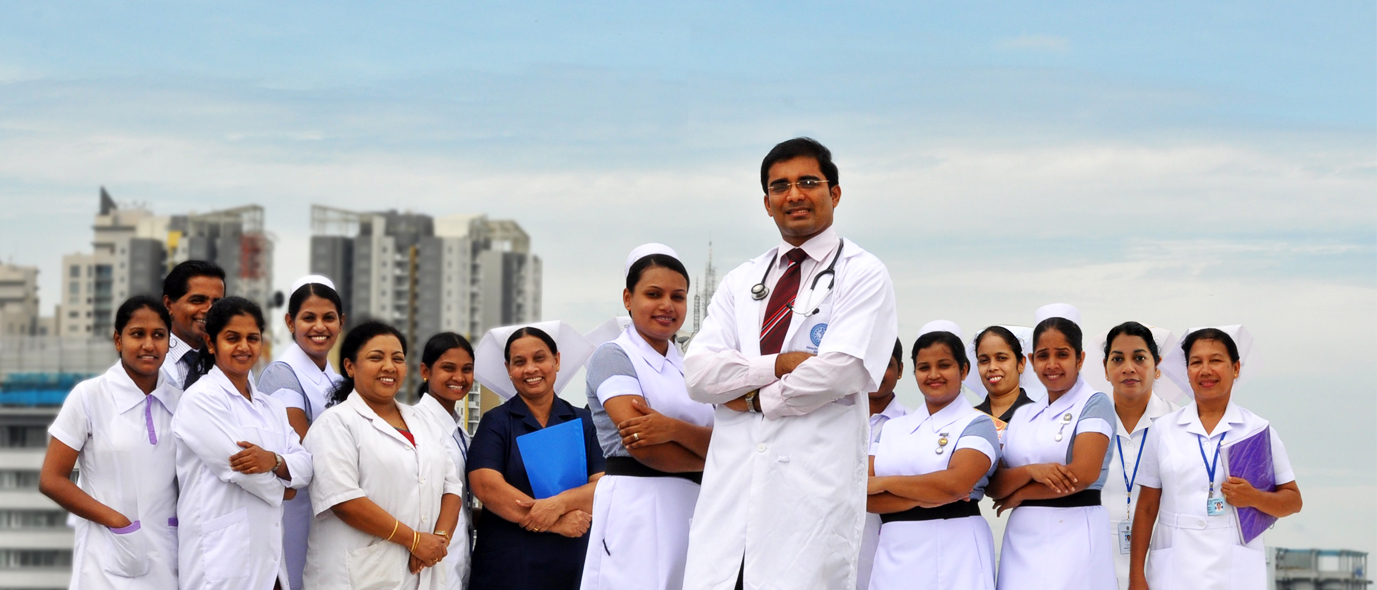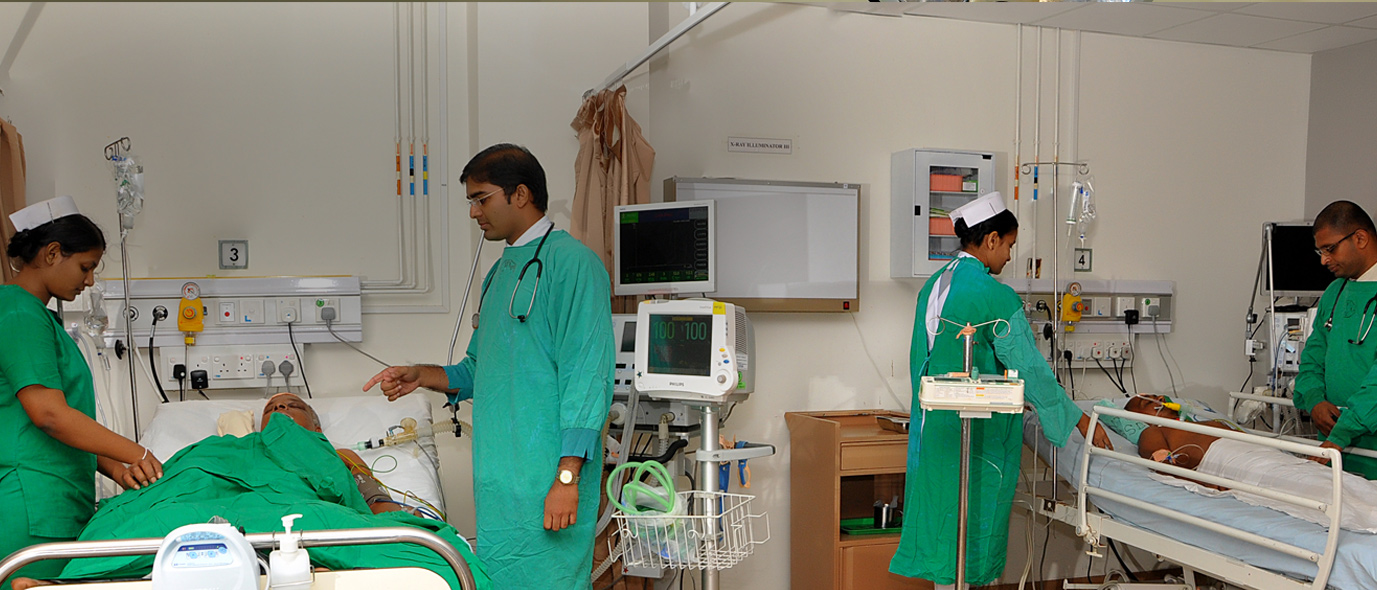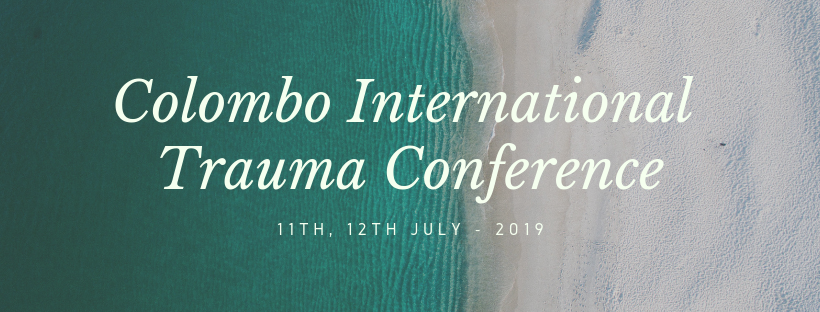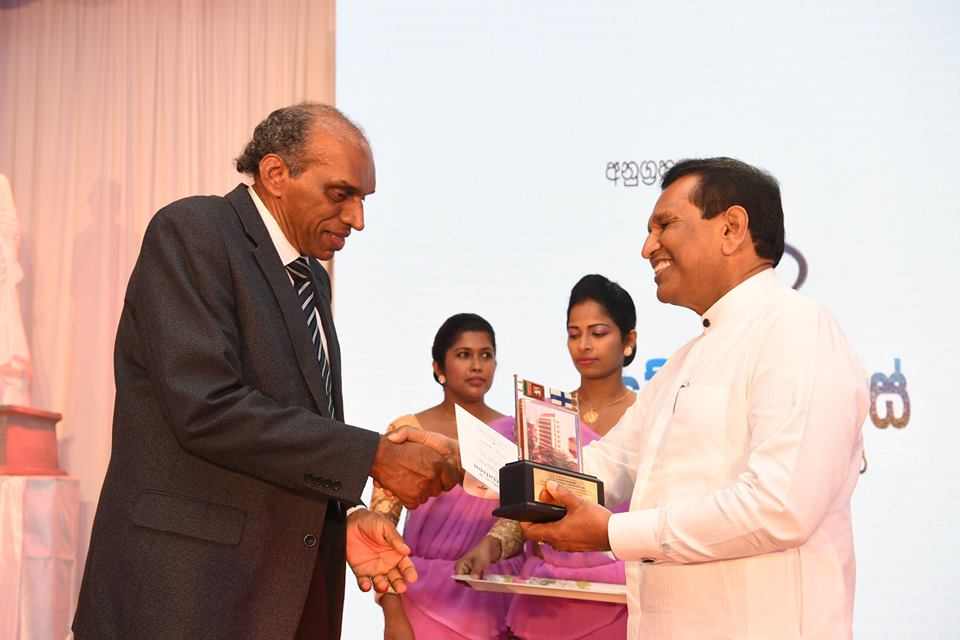Donations
Through your generous donations, you can be a part of our journey by providing essential medical needs.

Specialist Care Services

Clinic Services

Other Services
Home
The National Hospital of Sri Lanka, a legacy of 150 years...
Click on the link to download the 150th-anniversary publication: National Hospital of Sri Lanka 1864 - 2014
The third Medical Ward Complex was constructed with the aim of mitigating the inconveniences faced by patients upon admission to the hospital. It was opened on April 19th, 2013, by President Mahinda Rajapaksa, upon the invitation of the Health Minister Maithreepala Sirisena. Minister A.H.M. Fowzie and the Director of the Hospital Dr Anil Jasinghe  were also present at the occasion.
On June 21st, 2013, the Pain Management Unit was opened under the directives of consultant Anaesthetist Dr Rohini Ranwala.
On May 2nd, 2014, the Cornea Collecting Centre was launched under the auspices of the National Eye Bank of Sri Lanka (NEBSL). A health assistant from the NEBSL coordinates the services, working round the clock daily. The collected corneas stored in a deep freezer and are transported to the NEBSL.
This momentous project took six years to complete, and was opened for the public’s benefit on March 31, 2011 by President  Mahinda Rajapaksa, upon the invitation of the Health Minister Hon.Maithreepala Sirisena. Saudi Arabian Ambassador Abdul Aziz A.R. Jamaaz, as well as the Vice Chairman and Managing Director of the Saudi Development Trust Fund Yusuf Ali Basam were also present at the occasion.
An ECG Unit was opened in the out-patient department on November 1st, 1955, where approximately six patients were provided with the facility each day, with nearly half an hour being spent on each patient’s assessment.
1955 also saw the recruitment of the first urogynaecology specialist of the General Hospital, Dr George Nelson Perera.
In 1957, the College of Physiotherapy and Occupational Therapy was inaugurated as an affiliated institution of the Colombo General Hospital.
The School of Radiology that was founded in 1957 and situated in the X-Ray Reporting Room has, since then, been relocated to a new building adjoining the X-Ray Unit.
Pharmaceutical services were launched in 1958 in all the hospitals island-wide, including in the General Hospital. Initially, the in-house pharmacy of the General Hospital was operated by two pharmacists. While this setup was not adequate to cope with the scale and number of patients of the hospital in that era, by the year 1970, the unit came to be manned by 15 pharmacists who worked round the clock, twenty-four hours. The unit was, in fact, the first of its kind to provide such a service. With the growth of the number of in-patients and their treatment methods, the pharmacy was shifted to the top floor of the three-storeyed building initially constructed to provide kitchen facilities. The School of Pharmacology was also established in the same building.
On the 2nd of February, 1958, the then Prime Minister Mr S.W.R.D. Bandaranaike declared open the Surgical Ward and the Surgical Complex. After the opening of this block, known as the Bandaranaike Building, the first patients to be treated were neurosurgical patients. In fact, the fourth floor of this building was exclusively dedicated to Neurosurgery, consisting of 15 hospital beds. The entire movement was spearheaded by a foreign-trained repatriate, Neurosurgeon Dr Darrel Weinman. He assisted in his endeavours by another Neurosurgical specialist, Dr S.A. Cabral. Eventually, the male ward consisted of 9 beds, while the Intensive Care Unit consisted of 10 beds. The female ward and children’s ward also possessed 10 beds each. While the ICU had only two Bleez Ventilators; all patients irrespective sex or age, were compelled to receive treatment under them.
In the first half of the 1960s, the blood transfusion system affiliated to the Surgical Department was under the oversight of Dr Percy Gunawardhane. When he was appointed the registrar of the Blood Bank in the General Hospital in 1962, he took steps to relocate the Blood bank at a new venue.
In 1960 a Electro Encephalography unit was begun in the Neurosurgical Unit; while it was initially situated in the OPD, it was moved later to the neurosurgical division. In 1988, the first training school for Electro Encephalography was established in neurosurgical unit by four trained personnel. In 1997 it was shifted to the neurology unit.
Ward No 59 is the Mental Health Ward. Affiliated to the University of Colombo, its inception was in the latter half of the 1960s. At that time, the Dean of the Medical Faculty of the University of Colombo was Prof Stanley Dissanayake. In 1969, he was succeeded by Dr C.P. Wijesinha.
The Victoria Memorial Building that originally housed the Eye Hospital was vacated when the present-day Eye Hospital complex was declared open adjacent to it in 1965. Two years later, on New Year’s Day of 1967, a newly constituted Accident Ward was inaugurated in the Victoria Memorial Building in a ceremony presided by Prime Minister Dudley Senanayake. However, the Accident Ward known to today’s Sri Lankans was declared open much later, on March 15th, 1991, by President R. Premadasa. On that date, a new post of Deputy Director for Accident Ward was also created.
Sri Lanka’s first Intensive Care Unit was opened in the Surgical Complex on June 15th, 1968. With the inauguration of this six-bed unit by the then Health Minister E.L. Senanayake, the Emergency Trolly/Crash Cart concept was also incorporated to Sri Lanka’s medical history.
Although plastic surgery was introduced to the General Hospital in 1970 by specialist Dr A. Wijesinha, the acceptance of that branch of medicine was remarkably weak in that era. These patients were treated in two rooms that are now situated in Ward No 4.
While it has been difficult to recover historical information pertaining to the Nutrition Division, it has been ascertained that the unit was inaugurated on April 11th, 1967.
The founding of the Cardiology Unit was spearheaded by Dr I.O. Obeysekara. At its inception in 1969, this new unit laid claim to two wards and two ICUs. Today, it claims two ICUs and three wards (Wards 60, 61, and 70). This year (2014), preparations are underway to incorporate another ward (Ward No 71) to the unit. While six units are in operation, 13 doctors manage their operations. An Angiography Unit was opened in 1973.
Until the year 1972, Dr J.R. Wilson was the consultant on respiratory diseases in both the Colombo General Hospital as well as the Colombo Central Chest Clinic. In 1973, the above post was taken up by Dr Christopher Gunapala Uragoda. While respiratory patients were admitted to the hospital upon his consultation, he also conducted a weekly clinic on respiratory diseases. Dr C.G. Uragoda was succeeded in the Chest Clinic by Dr P.N.B. Wijekoon. In 1989, a new service was launched in relation to the respiratory system; for the first time in history, a Sri Lankan hospital was able to administer fibre-optic bronchoscopies on patients, under the able leadership of Dr Champa Jayasundara. This service, deployed in Surgical Theatre A, was carried out consistently for two consecutive years. The service was restarted again in 1994 by Dr Keerthi Gunasekara. During this time, Dr P.N.B. Wijekoon was the consultant for respiratory diseases at the General Hospital. Upon his retirement in 2000, Dr Amitha Fernando was appointed as acting consultant, respiratory diseases.
The Burn Unit that was opened on October 28, 1974 in the Lady de Soysa Ward was the brainchild of specialist surgeon Dr Joe Fernando. The financial cost of this establishment was borne by philanthropist and magnate, C.S. de Soysa.
Within the ward, there are 8 beds for male patients and 10 beds for female patients. The unit consists of a burns surgical theatre, a burns clinic, and a rehabilitation division.
In the 1960s, the farthest corner of Ward No 56 was demarcated for dermatological patients. In the year 1978, the Dermatological Ward was relocated to a completely different building. While, today, this location is known as Ward No 13, it was then known as the Naval Ward. The ward comprised of a wood-panelled upper floor, a rope-operated elevator and an old-fashioned staircase. Thus, the building bore the allure of historical architecture. The ward included 48 beds, which were divided between the upper and lower floors, where the former housed male patients and the latter housed female patients. In the early days, dermatological patients were not provided the facility of a clinic, and in the 1960s, were interned in Room No 36 of the Out-Patient Department.
In 1979, diarrhoea patients arriving at the OPD were cordoned in an ad hoc space and treated as a matter of urgency. This space, on June 8th, 1980, was converted by the then Director of the General Hospital Dr Joe Fernando into an Emergency Treatment Unit.
The Governments of Sri Lanka and Finland entered into a bilateral agreement in 1979 to deploy a project to renovate the Colombo General Hospital. Thus, during the 1980s, a team of Finnish specialists arrived in Colombo and, with the collaboration of specialist Dr Peiris, studied a variety of issues relevant to the matter. Subsequently, they developed a 6-stage strategy for the project, and the estimated completion timeframe was 15 to 20 years. It was also concluded that while the Finnish government would bear 85% of the total costs, the remainder was to be borne by the Sri Lankan government. The first phase of the project was to completely refurbish the Accident, Emergency, Orthopaedic, and Trauma Units with state-of-the-art equipment. This was situated at the sixth floor of the Doctors’ Residences building (No 79, down Regent Street).
The guidance provided by the Finnish government was hugely useful in continuing the work of the hospital staff in maintaining the upkeep of the refurbished units.
Although the recoverable records on the hospital’s mortuary were scanty, it has been ascertained that it was first situated in the same area as the ICU of the Accident and Orthopaedic Wards. According to some reports, the mortuary had not included refrigeration facilities. While corpses were first reportedly stored on mere ledges, subsequent to Finnish aid, a new mortuary had been opened in the new laboratory building. It was initiated as a pilot project in 1987 by microbiology specialist Dr S.D. Athukorala. Dr. Athukorala was renowned for the compilation of the ‘Infection Control Handbook’. As per an article published on July 14th, 1997 edition of the ‘Janatha’ newspaper, the mortuary possessed refrigeration facilities at that time: the mortuary accordingly consisted of 38 refrigeration units. However, this number too had proved inadequate during that period due to the then-prevalent armed conflict in the country. Today with the possession of 56 units, the congestion in the mortuary has been reduced significantly.
On January 14, 1982, a ten-bed medical intensive care unit was declared open by the then President J.R. Jayawardane. Dr P.T. de Silva, who spearheaded the project to have this ICU established, also catalysed the establishment of a Dialysis Unit, directly adjacent to the ICU unit, in what is now known as Ward No 41.
The Renal Transplant Unit of the General Hospital was opened on May 6, 1987. The first CT-scanning machine was installed in the year 1989.
The Diabetes Clinic was operational within the OPD during the time period of 1980 to 1990, Â under the supervision of Dr Salgado. Subsequently, its supervision passed to Dr Sarath Gamini de Silva for the period 1990-2000, then to Dr Kottegoda during the period 2000-2004, and since then under Dr Noel Somasundaram to date.
The hospital laundry was established as a result of Phase I of the Finland government’s renovation project, in the year 1994. The laundry consisted of two 90kg-capacity washing machines, two 50kg-capacity washing machines, one 25kg-capacity washing machine, four 50kg-capacity drying machines, a steam boiler, and a fabric pressing appliance.
The medical ward complex of NHSL was declared open by the then President Chandrika Kumaratunga Bandaranaike on February 1st of 1995, in the presence of the then Health Minister A.H.M. Fowzie.
January 31st of 1996 is etched permanently in the collective consciousness and memory of the staff of National Hospital of Sri Lanka as the day hospital was called upon to admit and treat approximately 1200 patients as a result of the bomb blast that devastated the Central Bank. 76 lives were lost that day.
Until 1980, the Medical Archival Unit of the hospital was housed near the blood bank premises, with one Assistant Health Manager, three Ward Clerks and a Junior Executive. However, after the year 1980, the unit was relocated to its current venue.
The National Poisons Information Centre was established with a generous grant received from the International Development Research Centre, Canada, on the 1st of January, 1988, under the supervision of Prof Raveendra Fernando. The Centre was also incidentally the first of its kind in all of South Asia. The Centre holds full membership with the WHO-affiliated Association of Clinical Toxicology and Poisons Control Centre; it also works in direct association with UK Toxbase and the Thailand Poison Information Network.
Under the supervision of specialist Dr Sudath Gunasekara, a Clinical Neuroanatomical Unit was established within the Neurology Division in the year 2000. This unit assists in the treatment of both neurological and non-neurological patients. Dr Sudath Gunasekara became the first Neurophysiology consultant in Sri Lanka, having been appointed to that position in the year 2000; this advancement particularly brought with it the technical expertise of conducting BSER, VEP, VEEG tests at the General Hospital, under his guidance through the Neurophysiology Unit.
The year 2000 also saw the opening of the innovative Speech Pathology Unit under the leadership of Dr Jagath Wijesekera, thus introducing treatments for ailments such as speech defects, language defects, and swallowing difficulties etc.
Since the year 2000, the Dental Clinic came under the purview of a Deputy Director attached to the NHSL. Also in the same year, the first ever MRI machine began its operations in the hospital.
The first Vascular Surgical Unit of the hospital was launched according to the vision of Prof Sherifdeen, through the interventions of specialist vascular surgeon Dr S. Daminda Rajamanthri. The Unit was opened on January 27 of 2005, in the old ground floor of the Victoria Memorial Building.
Rabies Treatment Unit began operations on April 4, 2005, in Room No 2 of the Out-Patient Department.Before before starting of this Unit, the procedure was , admit patients who required the administration of Anti-Rabies Vaccines and Anti-Serum to the ward, where sensitivity tests would be carried out on them before the vaccines and serum were provided. The Director and the Deputy Director Mrs Rani Fernando offered support for the launching of this unit tremendously. This unit was the brainchild of Dr Amila Gunasekara.
,Neurotrauma Unit  was funded by the generous donations of the Government of Saudi Arabia. The foundation stone to the unit was laid by President Mahinda Rajapaksa on September 26, 2005, upon the invitation of the then Health Minister Nimal Siripala de Silva. The occasion was graced by the presence of the Saudi Arabian Ambassador to Sri Lanka, Mr Mohammed al-Ali.
Welcome to National Hospital
Centre of Excellence in Health Care.
The National Hospital of Sri Lanka (NHSL), situated in Colombo on a 32-acre block of land, is the largest teaching hospital in Sri Lanka and the final referral centre in the country, consisting of 3000 beds. it is the training centre for undergraduates and postgraduate trainees of the Faculty of Medicine. The nursing training school, Colombo, PBS, and Schools of Radiography, Pharmacy, Cardiograph, physiotherapy and occupational therapy are also affiliated with the National Hospital.
Donations to NHSL from United States
The U.S. Ambassador to Sri Lanka, Julie Chung paid a visit to the National Hospital of Sri Lanka, Colombo on 14 June 2022 to officially handed over much-needed medical consumables to the hospital donated by SLMANA Inc. The donation was accepted by Dr W.K. Wickremasinghe, DDG-NHSL and Dr Indika de Lanerolle, Consultant Emergency Physician. The United States, being an ally of Sri Lanka has always assisted the Sri Lankan public in times of crisis and the donated items shall facilitate the provision of continuous healthcare through NHSL-Colombo.
 |
 |
|||
